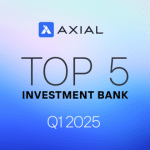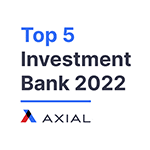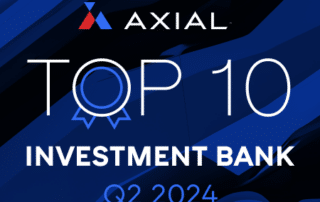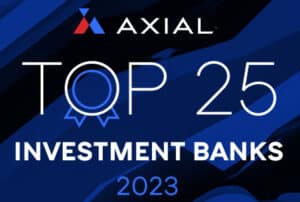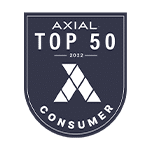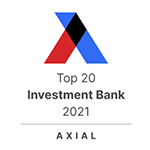Dermatology Practice Valuation: 2025 Benchmarks
Dermatology remains one of the most active and resilient sectors in physician services M&A. Even as transaction volumes in other specialties softened in 2024 due to higher interest rates and selective lender behavior, dermatology continued to attract strong private equity and strategic interest. We have seen robust dermatology transaction volume in 2025, with sixteen buyout deals completed through October, according to Pitchbook. Most of these were add-on transactions completed by PE-backed groups. A meaningful share of U.S. dermatology practices are now backed by private equity sponsors.
Industry fundamentals remain exceptionally strong: an aging population, increased awareness of skin health, and rising demand for both medical and aesthetic procedures continue to drive growth. Skin cancer remains the most common cancer in the U.S., with ~850,000 Mohs surgeries performed annually, while elective service lines such as injectables, laser treatments, and medspa offerings deliver high-margin, cash-pay revenue streams. Increased private equity interest in aesthetics has been a particular source of momentum.
Key Takeaways
Large dermatology platforms can command 12–15× EBITDA, consistent with 2025 healthcare benchmarks for scaled physician groups.
Small to mid-sized practices typically trade at 4–9× EBITDA, depending on profitability, payor mix, and ancillary services.
Platform-ready practices often command several multiple turns higher than smaller add-ons.
Cosmetic dermatology exposure and in-house ancillaries (e.g., pathology, Mohs surgery, medspa) are top drivers of premium valuations.
Sunbelt and suburban markets continue to command strong buyer competition due to favorable demographics and commercial payor mix.
2025 Dermatology EBITDA Multiples
| Practice Type | Typical Size (Revenue) | 2025 EBITDA Multiple Range | Notes / Key Drivers |
|---|---|---|---|
| Solo Practice | <$2M | 3×–5× | Owner-dependent, limited geographic reach, physician-to-physician deals. |
| Small Group (1–4 locations) | $2–15M | 4×–7× | Broader provider base, mix of medical and cosmetic services, growing buyer pool. |
| Regional / Mid-Sized Platform | $15–50M | 8×–10× | Centralized management, in-house pathology or Mohs, diversified payor base. |
| Large Integrated Platform | $50M+ or $10M+ EBITDA | 12×–15× | Institutional infrastructure, multi-state presence, scalable growth play. |
*Actual pricing varies with each transaction based on many factors. Intended for educational purposes only and not a guarantee of any outcome.
Revenue Composition and Operating Margins
Buyers evaluate dermatology practices not just by top-line revenue but by the composition of that revenue and its predictability. A balanced mix of medical and cosmetic services supports margin stability while allowing for growth through self-pay and membership-based models. Medical dermatology provides recurring reimbursement-driven income, whereas cosmetic and medspa services enhance profitability through higher-margin, cash-pay procedures.
Practices that demonstrate strong utilization of advanced procedures, like Mohs surgery or in-house pathology, show the highest resilience to reimbursement pressure. In contrast, those dependent on commodity medical visits with minimal ancillaries are more exposed to rate compression and payer policy changes. The table below outlines typical revenue contribution and operating margin profiles by segment.
| Segment | Typical Revenue / FTE Physician | Average Operating Margin | Valuation Effect |
|---|---|---|---|
| Medical Dermatology | ~$1.3M | ~25% | Anchors recurring EBITDA; predictable payor-driven model. |
| Cosmetic Dermatology | ~$1.8M | ~27% | Premium valuations; higher cash-pay component. |
| Medspa / Aesthetics | Variable | ~30%+ | High-margin but growth-sensitive; valued for brand and scalability. |
Practices with well-balanced service lines and recurring membership or subscription models can achieve 1–2× higher multiples than peers without these features.
Payor Mix Impact on Valuation
Payor mix remains one of the most significant valuation levers across healthcare services, and dermatology is no exception. Buyers prize a well-diversified book of business, particularly those with more than 70% commercial or cash-pay revenue, because it signals revenue quality, faster collections, and protection from government reimbursement cuts.
Medicare-heavy practices, while stable in patient flow, face ongoing pressure from rate adjustments and sequestration effects, including the 2.83% Medicare conversion factor reduction enacted in 2025. Balanced books with in-network commercial contracts still trade competitively, but out-of-network or Medicaid-weighted mixes are typically underwritten at discounts due to collection volatility. A strong in-network position remains essential; out-of-network or self-pay-heavy books (outside cosmetics) typically trade at discounts due to perceived volatility.
Active Buyers and Deal Dynamics
Dermatology continues to be one of the most competitive physician-service segments for private equity investors. More than 35 sponsor-backed platforms now operate nationally, with many pursuing a combination of tuck-in acquisitions and de novo expansion. Leading consolidators like Epiphany Dermatology, Pinnacle, Schweiger, and DermCare remain among the most active, each completing 20-40 transactions in recent years.
While 2024 saw a modest dip in overall M&A activity across healthcare, dermatology deals have proven resilient thanks to recurring patient demand and balanced cash flow models. Platform-ready practices often command several multiple turns higher than smaller add-ons, typically structured with a majority cash component and meaningful rollover equity.
Platform buyers-typically targeting $5M+ EBITDA practices—offer the highest valuations and most favorable deal structures, often including 70+% cash at close with meaningful rollover equity. Mid-size add-ons attract attention from existing platforms looking to extend geographic density or service-line capabilities.
| Buyer Category | Typical Target | Deal Structure | Key Value Drivers |
|---|---|---|---|
| Private Equity (Platform Creation) | $5M+ EBITDA, multi-site, scalable ops | 70-80% cash at close + rollover equity | Management depth, multi-market scalability |
| Existing PE Platform (Add-on) | $1–5M EBITDA, regional density | 70–% cash at close + rollover equity. Earnouts possible to bridge valuation gaps or compensate for growth initiatives. | Market adjacency, entering a new territory |
| Strategic / Health System | Multi-specialty or academic affiliation | Often all-cash | Geographic coverage, downstream integration |
Valuation Drivers (Premium Catalysts)
The spread between top- and bottom-quartile dermatology valuations in 2025 is driven less by macro conditions and more by execution at the practice level. Buyers reward scale, operational discipline, and sustainable growth capacity.
Practices that present clear financial transparency, recruiting depth, and repeatable KPIs often clear at the upper end of the range. Conversely, owner-dependent practices, aging partner groups, or those without a documented growth plan tend to experience valuation compression, even if near-term profitability appears strong.
| Driver | Why It Matters |
|---|---|
| Scale & Provider Bench Depth | Larger teams and recurring referral volumes reduce concentration risk. |
| Owned Ancillaries | In-house pathology, Mohs, and medspa services enhance blended margins. |
| Commercial Payor Stability | Reduces exposure to reimbursement compression. |
| Multi-Site Operations | Enables operational leverage and scalability. |
| Technology & Infrastructure | Central billing, EMR integration, and marketing automation improve efficiency. |
Conversely, owner dependence, aging partner demographics, and limited recruiting capacity remain the most common valuation discounts in diligence.
Regional Trends
Geography remains a consistent differentiator in dermatology M&A outcomes. Buyer activity is most concentrated in Sunbelt and suburban metro markets where demographic tailwinds (population growth, aging residents, and higher private-pay utilization) support recurring patient volumes.
Florida, Texas, Arizona, and Georgia continue to see outsized platform and add-on activity, while suburban regions around Dallas, Phoenix, and Atlanta draw sustained competition among national consolidators. Coastal urban centers remain liquid markets but can face tighter staffing conditions and higher overhead costs, which can slightly compress EBITDA margins.
Investors remain particularly interested in practices with satellite offices or de novo growth potential in secondary markets, where acquisition multiples can stretch further due to limited local competition.
Outlook
Despite modest reimbursement headwinds and a 2.83% Medicare conversion factor cut in early 2025, dermatology continues to outperform broader healthcare services on margin durability and transaction multiples. Sector expansion is increasingly anchored by aesthetic diversification, tele-dermatology adoption, and recurring medspa models—each of which supports sustained investor confidence.
As consolidation advances, top-performing dermatology practices that combine medical stability with cosmetic growth continue to clear at 8–12× EBITDA, while mature regional platforms can achieve 12×+. The market’s depth, scale opportunity, and recurring revenue profile make dermatology one of the most sought-after segments in 2025 healthcare M&A.
Learn More
FOCUS Investment Banking specializes in maximizing transaction value for healthcare practice owners through our proven quarterback approach to M&A advisory.
If you’d like to learn more about our healthcare investment banking services.
If you’d like to learn more about our healthcare investment banking services
Sources:
Practical Dermatology. “Mergers and Acquisitions in Derm and Aesthetics: Market Outlook” (September 2025). Practicaldermatology.com
SovDoc. “What Drives Dermatology Practice Valuation: A Complete Guide for 2025” (September 2025). SovDoc.com
HealthFMV. “Valuing Dermatology Practices in 2025: A Comprehensive Guide for Dermatologists, Investors, and M&A Professionals” (July 2025). HealthFMV.com
Stout. “Dermatology Outlook” (February 2025). Stout.com




